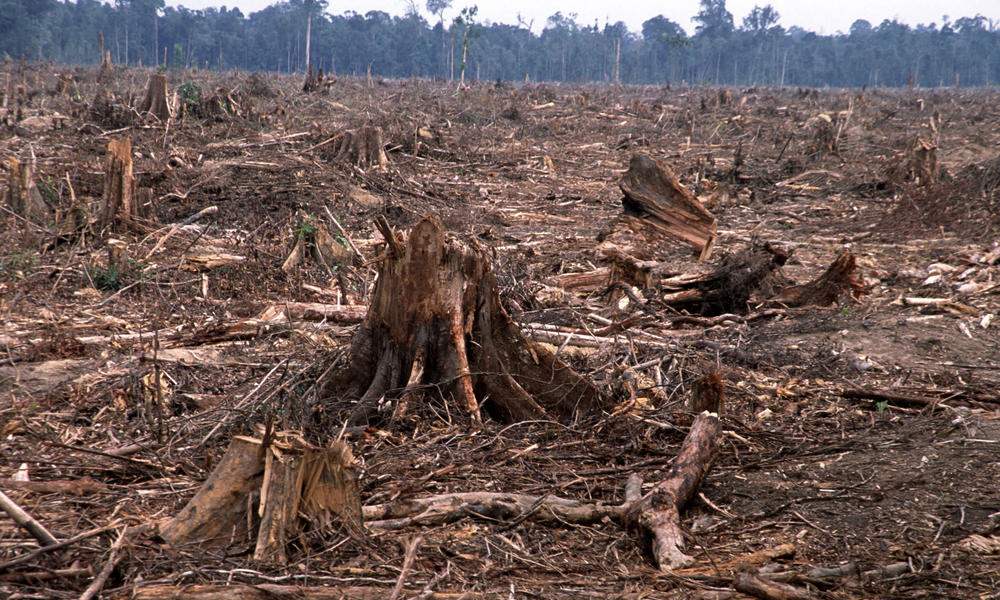The adverse effects of Deforestation are as follows:
Deforestation is also one of the important causes of environmental change. About 30 per cent of the earth’s surface is covered with forests. The human pressure on forests has, however, significantly increased in recent decades, especially after the Second World War.
ADVERTISEMENTS:
The need for more agricultural land, expanded demand for fuel and commercial wood and more demand for mutton and beef can be satisfied by replacing forests with clear grazing and agricultural lands (shifting cultivation, plantation and large-scale ranching, logging).
The rapid deforestation particularly that of tropical regions, is contributing to the enhanced greenhouse effect moreover, removal of the protective vegetation cover and its replacement with a crop or pasture often results in accelerated soil erosion that exacerbates nutrient deficit.
Rapid oxidation of soil organic matter is also promoted. As a result, the crop productivity declines which further results into serious economic consequences
The forests play a vital role in maintaining the oxygen and carbon balance of the earth. Moreover, forest destruction changes surface and air temperatures, moisture content and reflectivity.
ADVERTISEMENTS:
Conversion of forests to grassland, for example, increases surface temperature, raises air temperatures above the treeless ground and therefore increases the water holding capacity of the warmer air.
As winds move the hotter, drier air, it tends to exert a drying effect on adjacent forests and agricultural lands. It is calculated that cutting the forests of South America on a large scale should rise.
regional temperatures from 3° to 5°C, which in turn would extend the dry season and greatly disrupt not only regional but also global climates.
The major setback of the deforestation of tropical forests will be the loss of a major part of biological diversity of the earth. Of the estimated 5-10 million plant and animal species believed to exist on the earth, a minimum of 40 to 50 per cent are native to the tropical rain forests.
ADVERTISEMENTS:
Many of the tropical plants, e.g., rice, millet, cassava, yam, taro, banana, pineapple and sugarcane to name but a very few well-known ones the tropical rain forests are, in addition, the world’s main storehouse of medicinal plants and insects.
The destruction of these forests will deprive humans of untold potential benefits that might never be realized. The forests have numerous protective and productive functions for human beings and their conservation is essential for the survival of mankind.
The Amazon basin is one of the last great wilderness areas on the earth. The selvas contain innumerable unique plants and animals. The forests are increasingly under threat from new and expanding settlements and ‘slash and burn’ agriculture.
The use, misuse and overuse of savanna grasslands have also resulted into many environmental problems. About 20 per cent of the earth surface is occupied by savanna.
These grasslands are located between the equatorial rain forests and the arid and semi-arid hot deserts. Savannas are most extensive in Africa, where these occupy 65 per cent of the land area. They also occupy 60 per cent area of Australia, 45 per cent of South America and 10 per cent of India (Cole, 1986).
The savannas are generally used for nomadic herding, shifting cultivation, and semi-permanent cultivation, intensive dry land agriculture involving rotations and intercropping and more intensive flood land cultivation where small-scale irrigation is practiced.
The crop rotation and adequate fallow period is the most sustainable agricultural system in such areas. The existing land use systems are failing to provide the necessary increase in productivity of 4 per cent per annum (Okigbo, in Tothil et al., 1985: 95-106).
There is evidence that land degradation in savannas is accelerating as a consequence of overgrazing, firing and incautious management to enhance productivity. The world savanna lands are highly vulnerable ecosystems.
They present both considerable potential and considerable environmental degradation. As in many of the cases of environmental change, social, historical, cultural and economic factors are responsible for the existing land use practices in the savannas and their environmental degradation.
In case the savannas are not judiciously utilized, there is a strong possibility of these productive grasslands being transformed into unproductive semi-arid and arid regions of the world like that of their neighbouring hot deserts.

